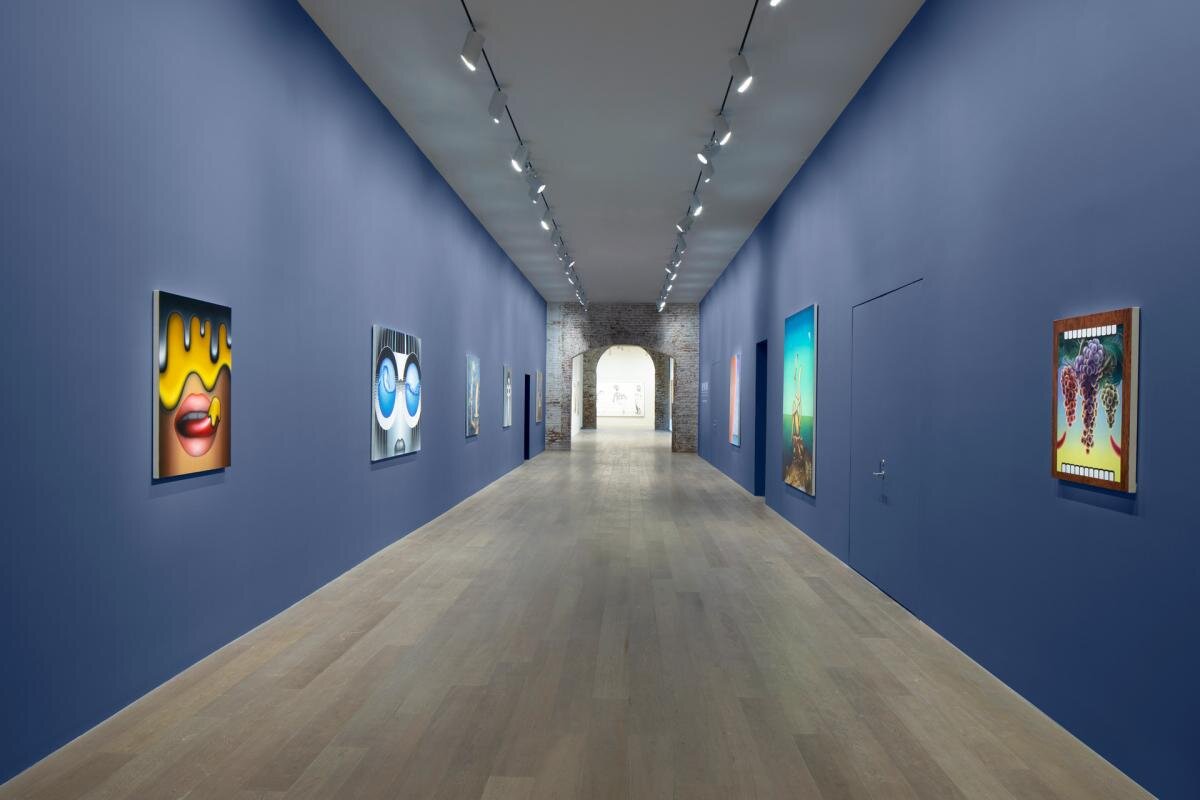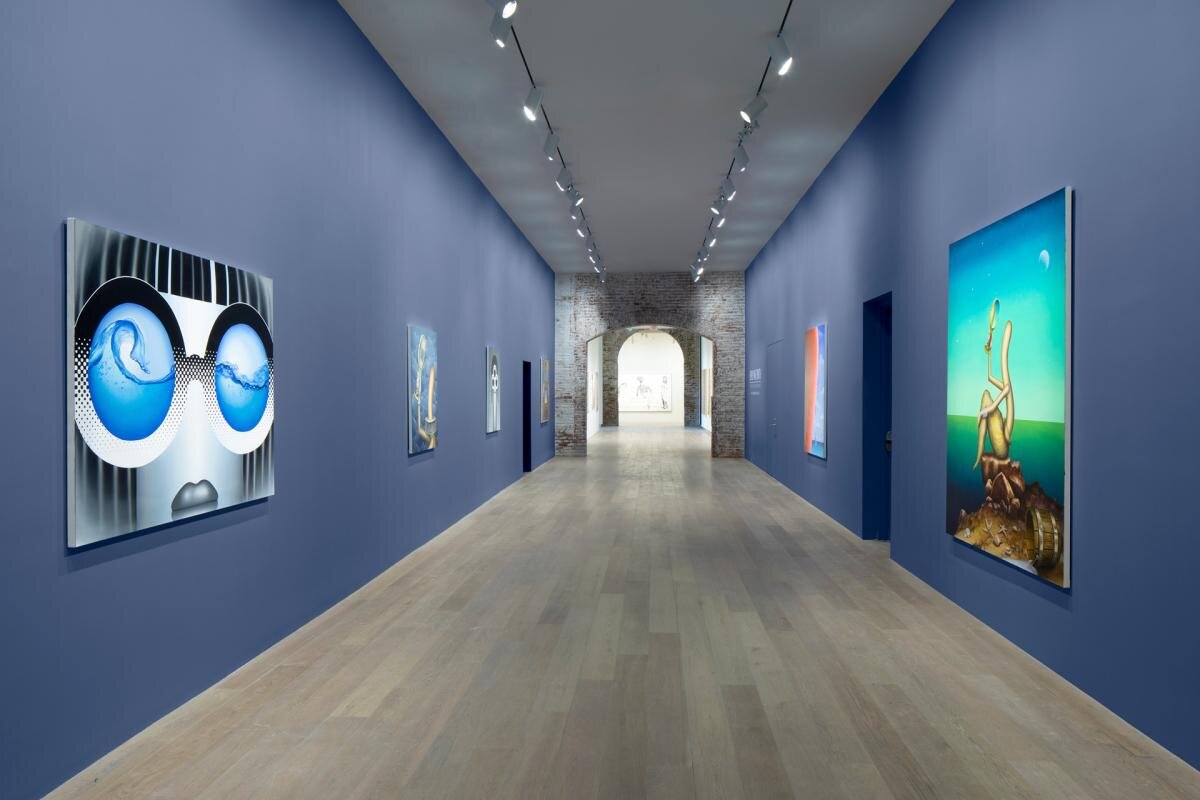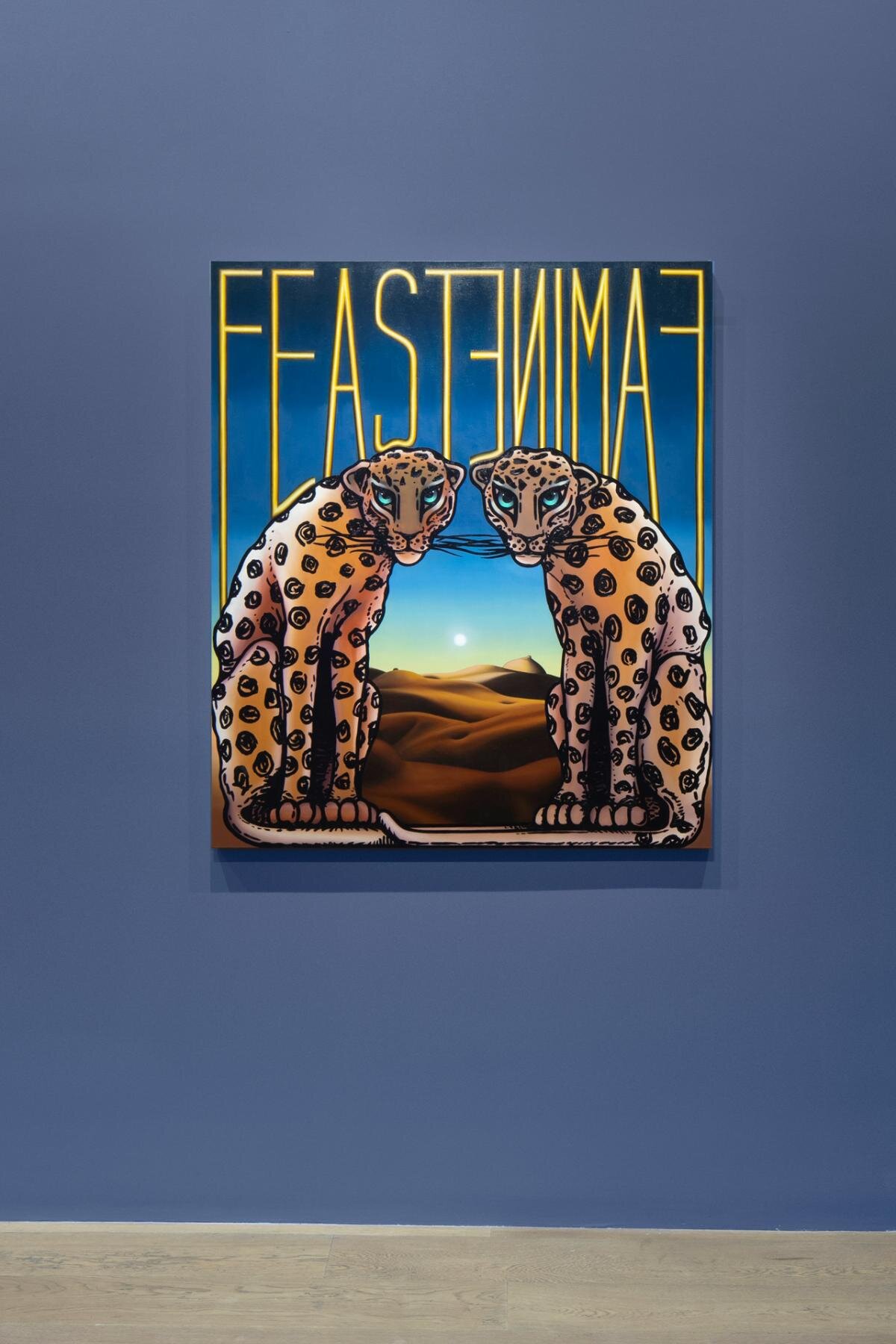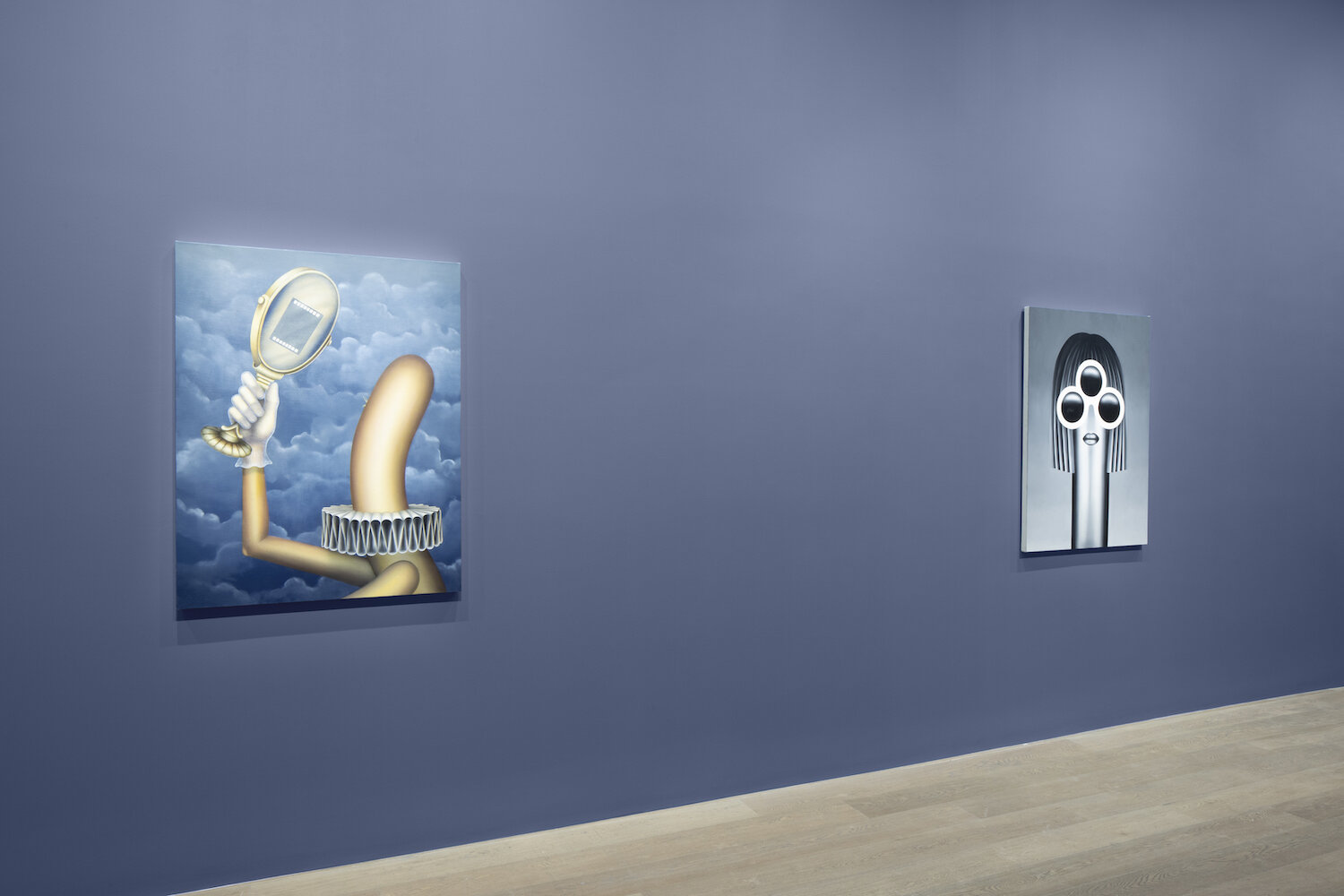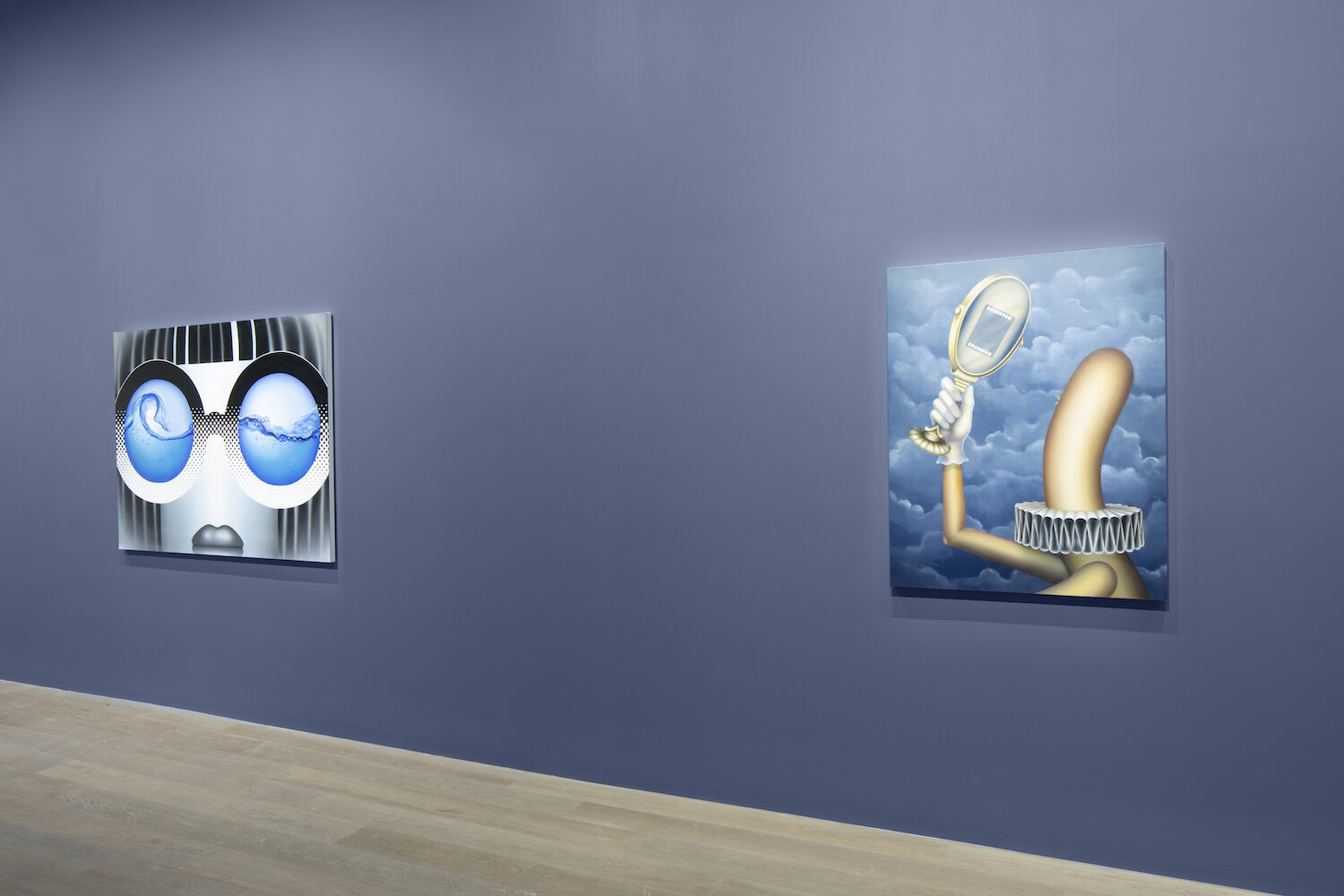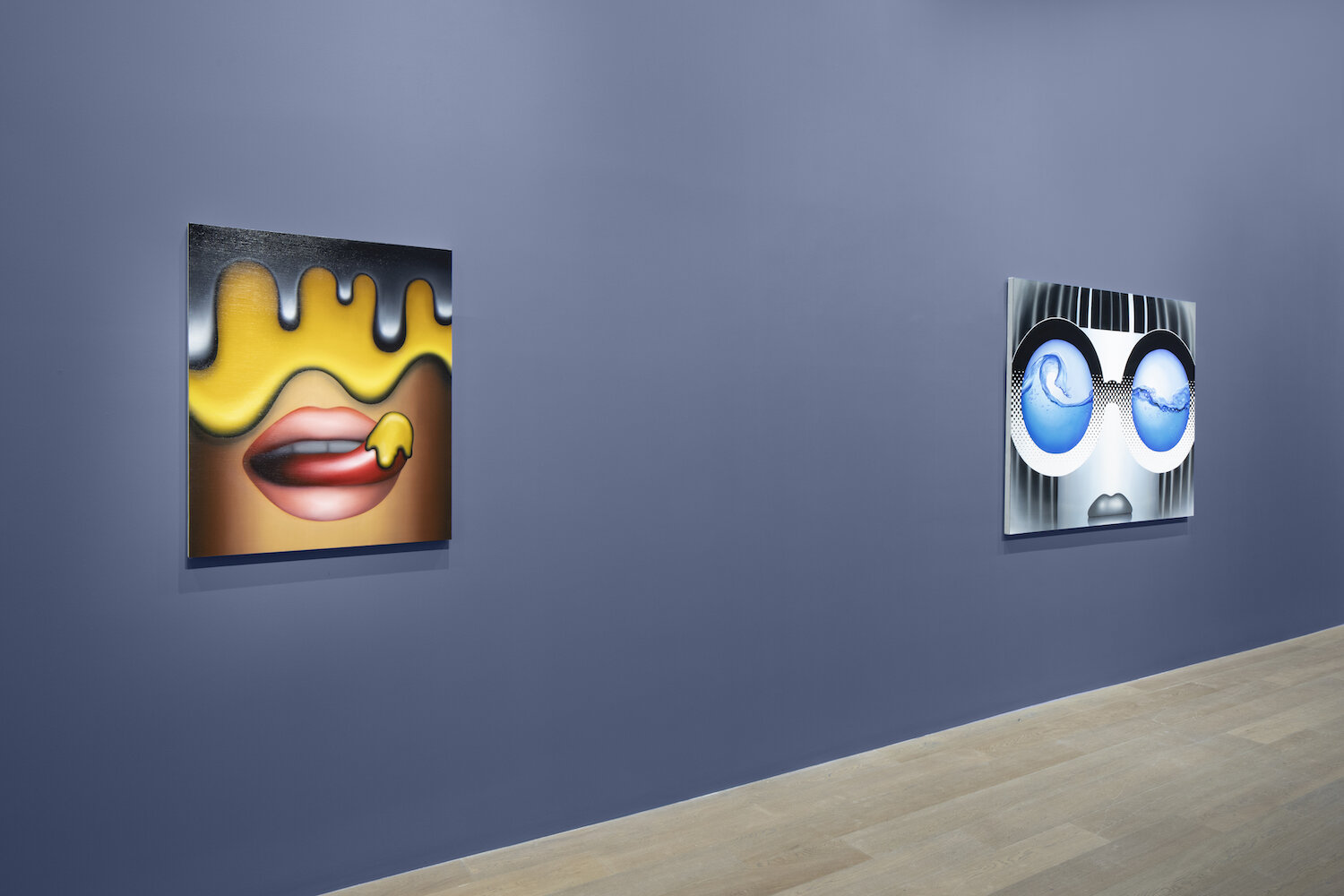EMILY MAE SMITH | “FEAST AND FAMINE”
Emily Mae Smith excavates and transforms cultural iconographies in wildly inventive paintings that are steeped in art history yet offer novel mythologies. While Smith’s work is oriented firmly in the tradition of Western figurative oil painting, it rejects the structures that have canonized the voices of white men and suppressed alternative subjectivities. Rather, she conceives fresh narratives and seeks to discover new territories in painting. In her imagined world, the artist’s protagonists act as stand-ins to examine subjects like gender, politics, labor, and representation.
Smith draws inspirations from sources as diverse as Ingres, Magritte, Art Nouveau, Pop Art, and the Pre-Raphaelites. On first approach, her work is funny, charming, surprising, and pristine. Through further investigation, viewers uncover rich symbolism in the objects and figures. Gaping mouths, extended tongues, eyelashes, eyeglasses, mustaches, and gun barrels all make appearances, codifying the layered and humorous visual toolkit that Smith wields to speak to feminist concerns.
An important avatar in Smith’s work is the broom. The artist interprets this character from The Sorcerer’s Apprentice, written by Johann Wolfgang von Goethe in 1797 and later popularized for American audiences in Disney’s 1940 animation. While pictorially genderless, the broom has become a metaphor for the working woman artist, referencing both housework and a paintbrush. Smith’s broom, presented as a figure lacking the traditional characteristics of a woman’s body historically depicted in painting, allows the artist to comment on the nature of domesticity, the male gaze, and other feminist issues without assigning human skin tone or explicit sexual attributes, inviting viewers to reevaluate accepted notions of painting through intersectional readings.
In Feast and Famine, the artist presents a selection of paintings from the past five years that reveal dichotomies in her work, with corporeality manifesting as either hard and slick or soft and sensual. While they seem to exist in the physical world, the bodies in these works are transformed — and transgressive — reveling in their subjectivity.
August 20, 2020 - January 1, 2021 | SCAD Museum of Art, Savannah, GA | text & curating by Ben Tollefson | photos by Aman Shakya, courtesy of SCAD
